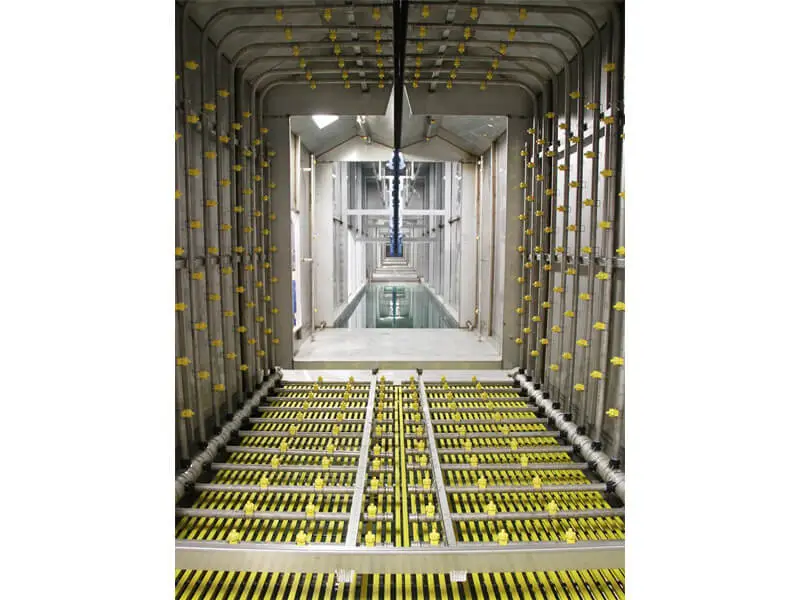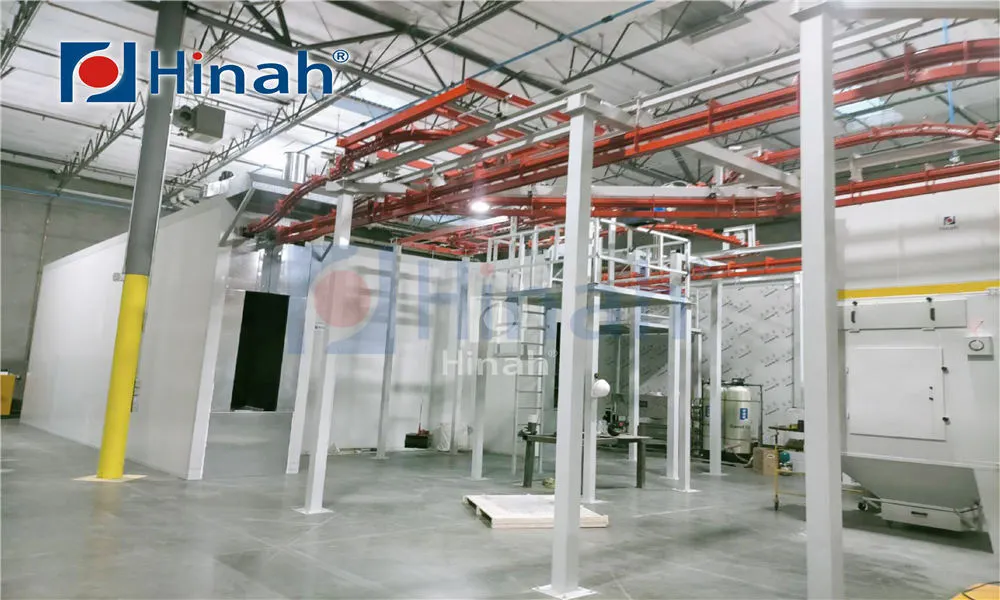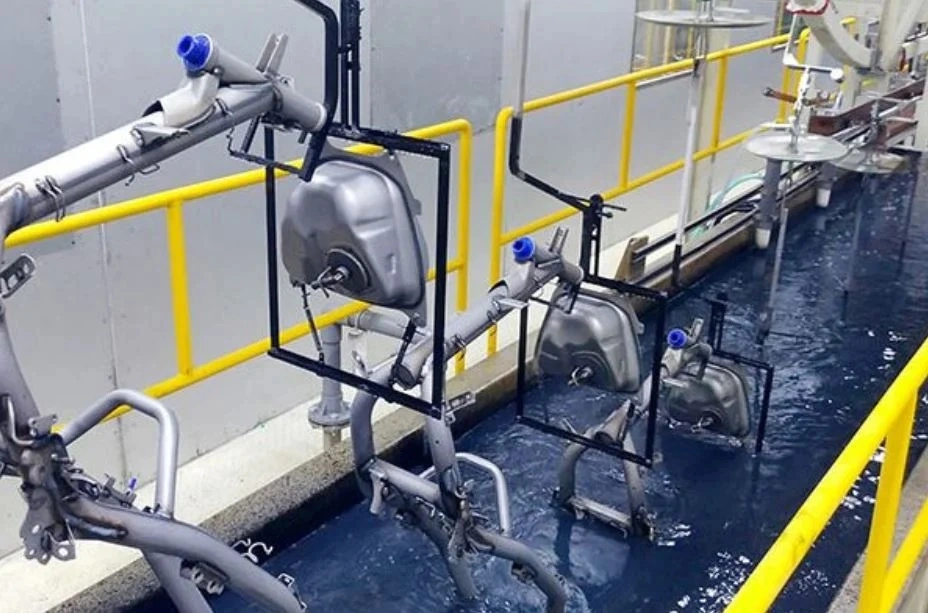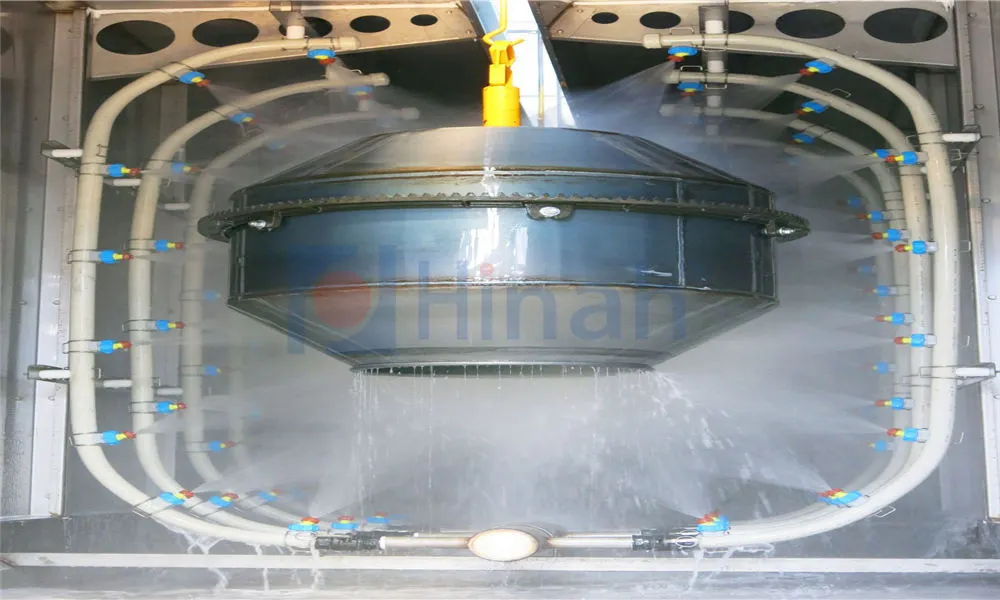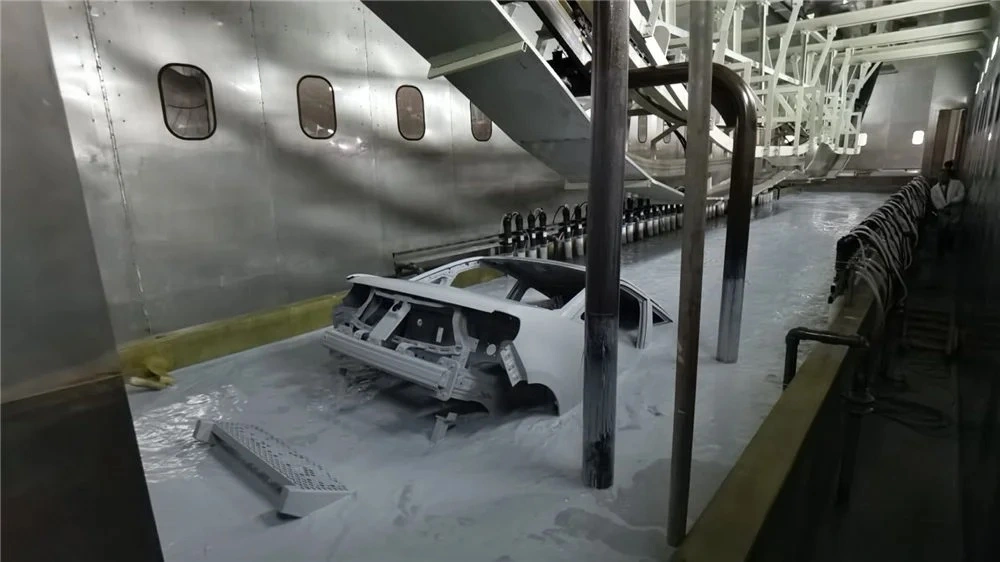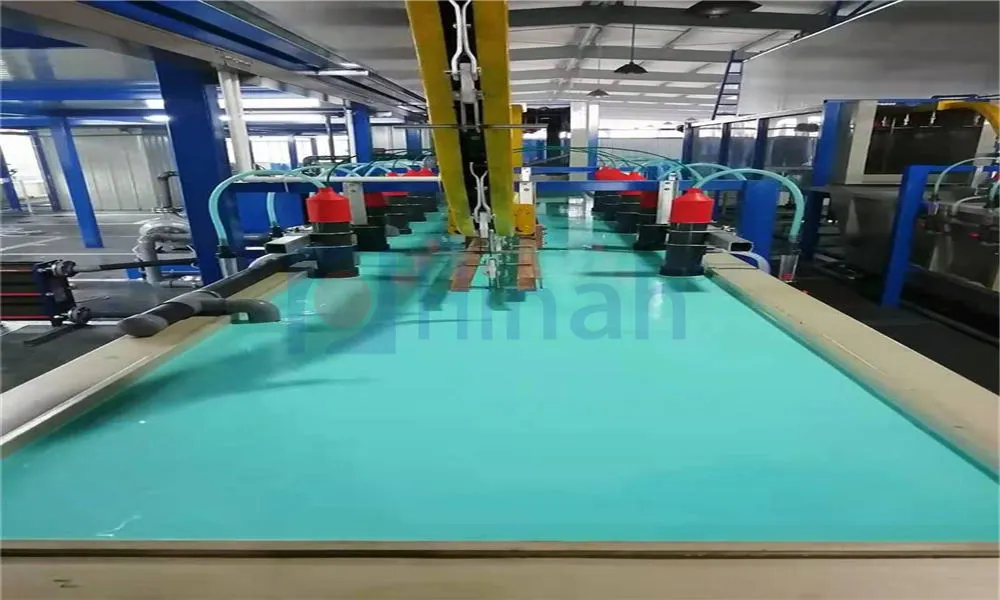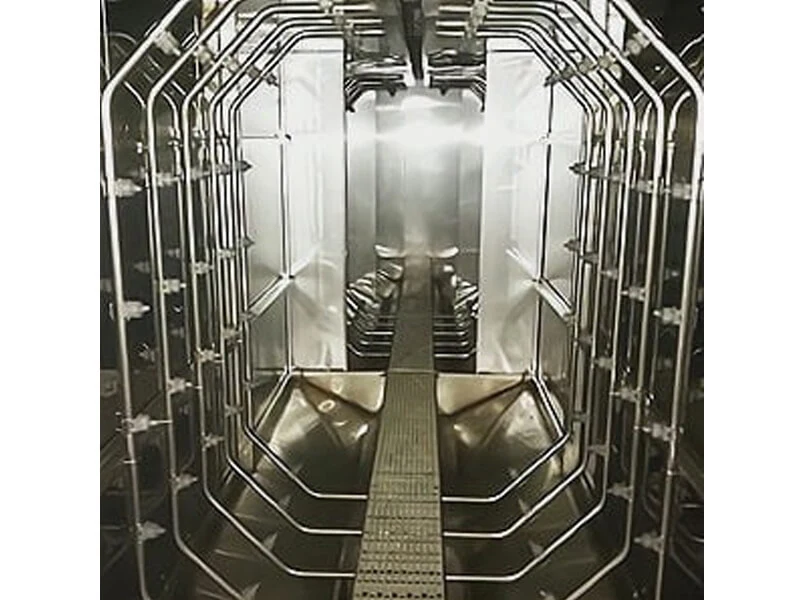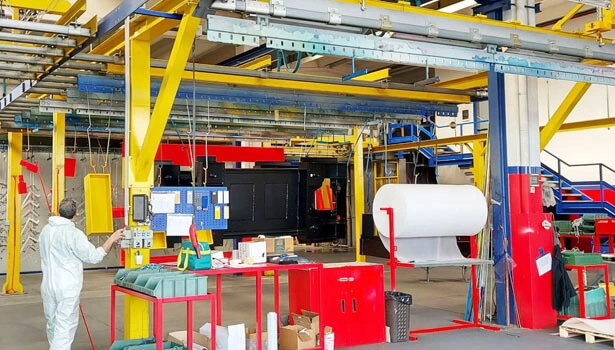If you're setting up a powder coating operation, whether in a professional shop or a serious DIY garage, the heart of your system is the powder coating spray booth. This isn't just a contained area to contain overspray; it's a critical component that dictates the quality of your finish, the efficiency of your process, and the safety of your workspace. A well-designed booth ensures a clean environment, contains potentially hazardous materials, and helps you reclaim valuable powder. This article dives deep into everything you need to know, from finding a powder coating spray booth for sale to the intricacies of its key components like the powder coating spray booth fan and powder coating spray booth filters.
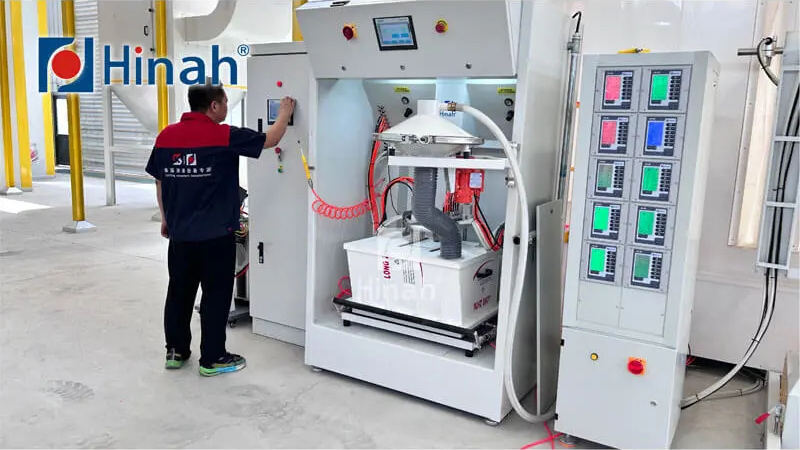
What is a Powder Coating Spray Booth and Why Do You Need One?
A powder coating spray booth is an enclosed, ventilated structure designed specifically for the application of powder coating. Its primary functions are:
Containment: It prevents the dry powder from escaping into the surrounding environment. This powder overspray is not only messy but can also be a health inhalation hazard and, in the right concentration, a combustible dust hazard.
Ventilation: It provides a controlled, consistent airflow that pulls the overspray away from the operator and the part being coated, leading to a cleaner application.
Collection: Most booths incorporate a recovery system (using filters and a collector) to capture overspray powder. This powder can often be recycled and reused, significantly improving material efficiency and reducing cost.
Quality Control: By creating a clean, controlled environment, the booth minimizes the risk of contaminants like dust, dirt, or moisture from settling on the freshly applied powder, which can cause defects in the final cured finish.
Without a proper booth, you risk a poor-quality finish, wasted material, and serious health and safety violations.
Key Elements of Effective Powder Coating Spray Booth Design
The powder coating spray booth design is the blueprint for its performance. Several factors must be considered to ensure it meets your specific needs.
Size and Throughput: The booth must be large enough to comfortably accommodate your largest parts, with enough room for the operator to maneuver the spray gun effectively. Consider both the size of individual items and your expected production volume.
Airflow and Ventilation Design: This is arguably the most critical aspect. The design must ensure laminar (smooth, non-turbulent) airflow across the entire work area. This is typically achieved through a design that pulls air evenly through the entire booth surface, carrying overspray toward the collection system. Proper airflow ensures overspray is effectively captured and doesn't swirl back onto the part.
Construction Materials: Most booths are constructed from durable, non-porous materials like coated steel, stainless steel, or rigid plastics. These materials are easy to clean and prevent powder from sticking to the booth walls, reducing maintenance and contamination risk.
Lighting: Excellent, shadow-free lighting is essential for the operator to see the application clearly and ensure complete, even coverage. Lighting fixtures are usually sealed and mounted externally or behind protective panels to prevent powder accumulation.
Type of Booth:
Open Face Booths: Simple structures that rely on a rear wall with filters and a powerful exhaust fan. Best for low-volume or large, odd-shaped items.
Downdraft Booths: Air is pulled down through the floor grates, carrying overspray with it. This is considered the premium design as it pulls contamination away from the part, resulting in the highest possible finish quality. Ideal for high-volume production and critical finish applications.
Semi-Downdraft Booths: A hybrid design where air is pulled through the back and floor of the booth, offering a good balance of performance and cost.
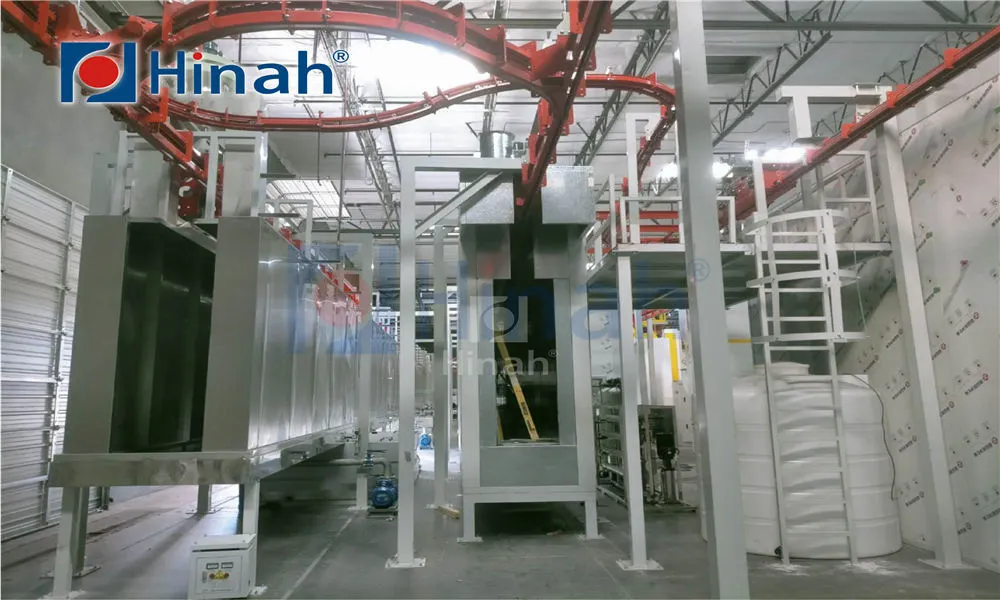
The Beating Heart: Choosing the Right Powder Coating Spray Booth Fan
The powder coating spray booth fan is the engine that drives the entire ventilation system. Its job is to create enough negative pressure (suction) within the booth to pull air and overspray through the filters.
Function: The fan’s suction creates the necessary airflow velocity (measured in feet per minute, FPM) across the booth opening. A standard target is 100 FPM, but this can vary based on booth design.
Key Specifications:
CFM (Cubic Feet per Minute): This is the volume of air the fan moves. The required CFM is calculated based on the cross-sectional area of the booth opening (sq. ft.) multiplied by the desired air velocity (FPM). An undersized fan won't create proper airflow, leading to powder escape and poor finish quality.
Static Pressure: This measures the fan's power to overcome resistance in the system. The filter cake (powder buildup on the filters) creates resistance. A fan must be chosen that can deliver the required CFM at the static pressure that will develop as the filters load up with powder.
Explosion-Proof (XP) Rating: Because powder overspray is combustible, the electrical components of the fan (and the entire booth) must be explosion-proof to prevent an electrical spark from igniting the powder cloud. This is a critical safety requirement, not an option.
Guardians of Clean Air: The Critical Role of Powder Coating Spray Booth Filters
Powder coating spray booth filters are the workhorses of the recovery system. They capture the overspray powder, allowing clean air to be exhausted from the booth (or recirculated) while collecting the powder for potential reuse.
Primary Function: To efficiently separate powder particulate from the airstream with minimal maintenance and maximum powder recovery.
Types of Filters:
Cartridge Filters: The most common type in modern booths. They offer a large surface area and high efficiency. They are typically cleaned by a pulsed jet of air (reverse pulse) that shakes the collected powder off into a hopper below.
Sock/Cascade Filters: Made of felt material, these are traditional and effective but often have a lower surface area than cartridge systems. They can be more messy to change.
Secondary Safety Filters: Some systems include a final, high-efficiency HEPA-style filter after the primary filters to capture any tiny particles that might escape, ensuring the exhaust air is extremely clean.
Maintenance is Key: Filters are consumable items. A well-maintained filter system maintains proper airflow and recovery efficiency. Neglected, clogged filters will choke the airflow, ruin finish quality, and put strain on the fan motor. Regular inspection and cleaning are essential.
Finding the Right Equipment: Navigating the Market for a Powder Coating Spray Booth for Sale
When you're looking for a powder coating spray booth for sale, you have several options, each with its own advantages.
New from Manufacturers: Buying new from a reputable manufacturer (like GFS, Col-Met, or Nordson) guarantees you get a booth that meets all current safety standards (NFPA, OSHA), is engineered for performance, and comes with a warranty. This is the best option for professional shops where reliability and compliance are paramount.
Used Equipment: The used market can offer significant cost savings. However, you must thoroughly inspect the booth for corrosion, fan motor condition, and filter integrity. Crucially, you must verify that the electrical system, especially the fan, is explosion-proof rated. Factor in the cost of potentially replacing all filters and any worn parts.
Online Marketplaces: Sites like eBay and Facebook Marketplace can be sources for both new and used booths. Exercise caution, verify specifications, and be wary of shipping costs for large items.
The DIY Challenge: Building Your Own Powder Coating Spray Booth DIY
For the avid hobbyist or DIY enthusiast with a tight budget, a powder coating spray booth diy project can be a rewarding endeavor. However, it comes with significant challenges and safety considerations.
Design Planning: Your design must prioritize strong, even airflow. A common approach is to build a frame from wood or metal studs and use panels of sheet metal, hardboard, or even heavy plastic sheeting for walls.
The Fan System: This is the hardest part. You MUST use an explosion-proof fan and motor. Repurposing a standard furnace blower or dryer fan is extremely dangerous due to the risk of ignition from the motor or arcing from powder buildup. Sourcing a properly rated XP fan is non-negotiable and often the most expensive part of a DIY build.
Filtration: You can purchase replacement cartridge or sock filters designed for powder coating. You'll need to build a housing for them that creates an airtight seal so all air is forced through the filter media.
Safety First: A DIY booth must be grounded to prevent static discharge. All electrical connections must be made to code. The booth should be placed in a well-ventilated area away from open flames or ignition sources. It is highly recommended to have a fire extinguisher rated for electrical and combustible fires (Class C) nearby.
Common Powder Coating Spray Booth Problems and How to Solve Them
Even the best systems encounter issues. Here are some common problems with a powder coating spray booth:
Poor Powder Recovery: The system isn't capturing powder effectively.
Cause: Clogged or damaged filters, an undersized fan, leaks in the ductwork or filter housing, or a full collection hopper.
Solution: Check and clean/replace filters. Inspect for air leaks and seal them. Ensure the fan is providing adequate CFM.
Powder Blowing Out of the Booth: Overspray is escaping into the shop.
Cause: Inadequate airflow velocity due to a clogged filter, a failing fan, or a booth design that creates turbulence.
Solution: Measure the airflow velocity at the booth opening. Clean or replace filters. Inspect the fan and motor for proper operation.
Powder Contamination in the Finish: Dirt, specks, or "fish eyes" appear after curing.
Cause: Contaminated powder (often from mixing colors in the same recovery system), dirty booth walls, old powder in the hopper, or a damaged filter letting debris through.
Solution: Thoroughly clean the booth between color changes. Use dedicated hoses and hoppers for different color families. Replace damaged filters.
Reduced Airflow:
Cause: Almost always caused by powder-loaded filters.
Solution: Implement a regular filter cleaning schedule. Use the reverse pulse system (if equipped) frequently during operation.
Fan Motor Failure:
Cause: Overheating due to working against the high static pressure of clogged filters.
Solution: Regular filter maintenance prevents this. Ensure the fan motor is properly sized and has adequate ventilation for cooling.
Investing time and resources into understanding and maintaining your powder coating spray booth is an investment in the quality of your work, the safety of your workspace, and the efficiency of your operation. By carefully considering design, components, and maintenance, you can ensure your booth performs flawlessly for years to come.


